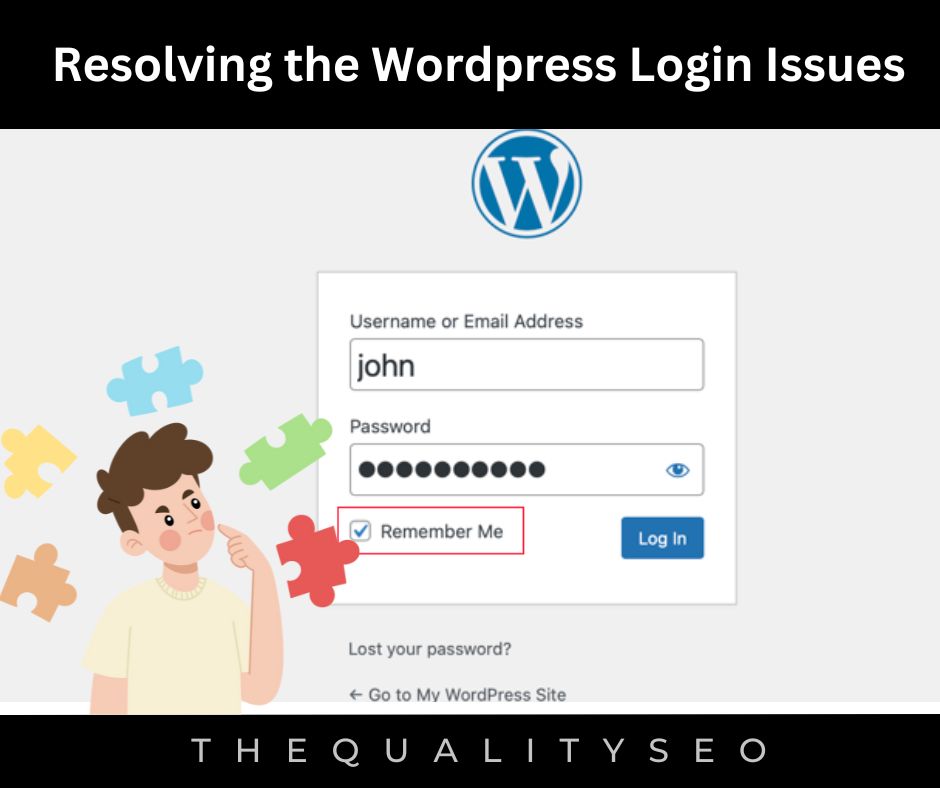In this article, we will discuss Resolving the WordPress Login Issues.
While WordPress is an extremely powerful platform, it does arrive with its part of few errors and bugs. One possible origin of resentment among WordPress users is the incapability to log into the WordPress admin Dashboard.
There are various explanations and causes why WordPress login problems might occur, some more familiar than others.
A. 7 Resolving the WordPress Login Issues
WordPress login issues can arrive in numerous forms. However, one familiar error that they keep coming up with regularly is that they’re usually fairly uncomplicated to solve.
For this division, we’ll head over each possible WordPress login issue from most comfortable to most challenging to solve which are as follows:
1. Lost or Forgotten Password
This is a noticeable one, of course, but nevertheless a familiar issue. If you modify your password repeatedly to ensure your site security, it’s very straightforward to ignore or lose the path of your current password.
While WordPress already contains a built-in feature to allow you to reset your password, there are several elements that can derail that strategy.
As an outcome, there are even quite a few various potential solutions that you may need to go through.
How to Recover a Lost or Forgotten Password?
If you’ve misplaced or failed to remember your password, you can first try employing the built-in recovery property.
Touch on Lost your password? on the login screen and you will be redirected to provide your email address. WordPress will mail you a link through email, which you can employ to make a new password:
If for some reason you can’t use this method, there are two other tricks you can try.
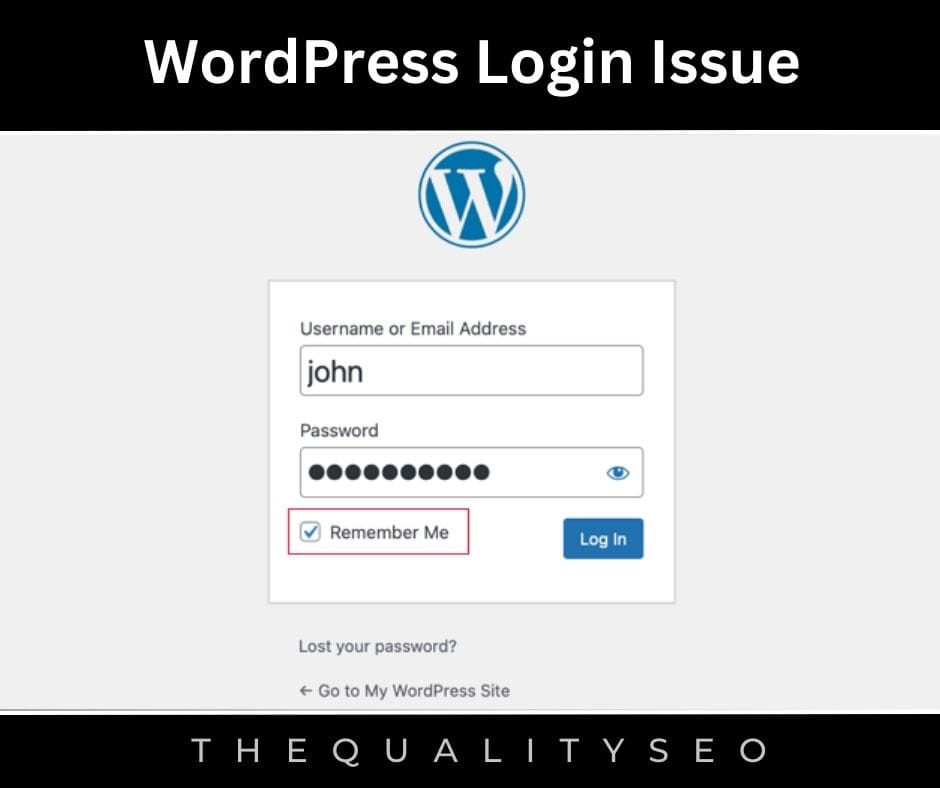
First, if you’ve employed numerous browsers or devices to log into WordPress, inspect to notice if any of those browsers or devices are even logged in. Then access the admin panel and change your password.
If that doesn’t operate, your next best alternative is to revise your password directly in the WordPress database. Most web hosts will deliver you with entry to database management software, such as phpMyAdmin. You can use that software to instantly edit values within the database, containing your password.
However, before you revise your WordPress database, make a complete backup of your site employing a reputable migration plugin. Then move to the following actions:
a. First launch phpMyAdmin, locate your site’s database, and open up the wp_users table.
b. In the list of users, locate your username in the user_login column and select Edit next to that row.
c. Find the user_pass field and type a new plain text password into the Value field, replacing the existing symbols and characters.
d. From the drop-down menu, select MD5.
e. Scroll to the bottom of the page and click on Go.
At this moment, you should be capable to log in using the new password you just assigned to your WordPress username with phpMyAdmin:
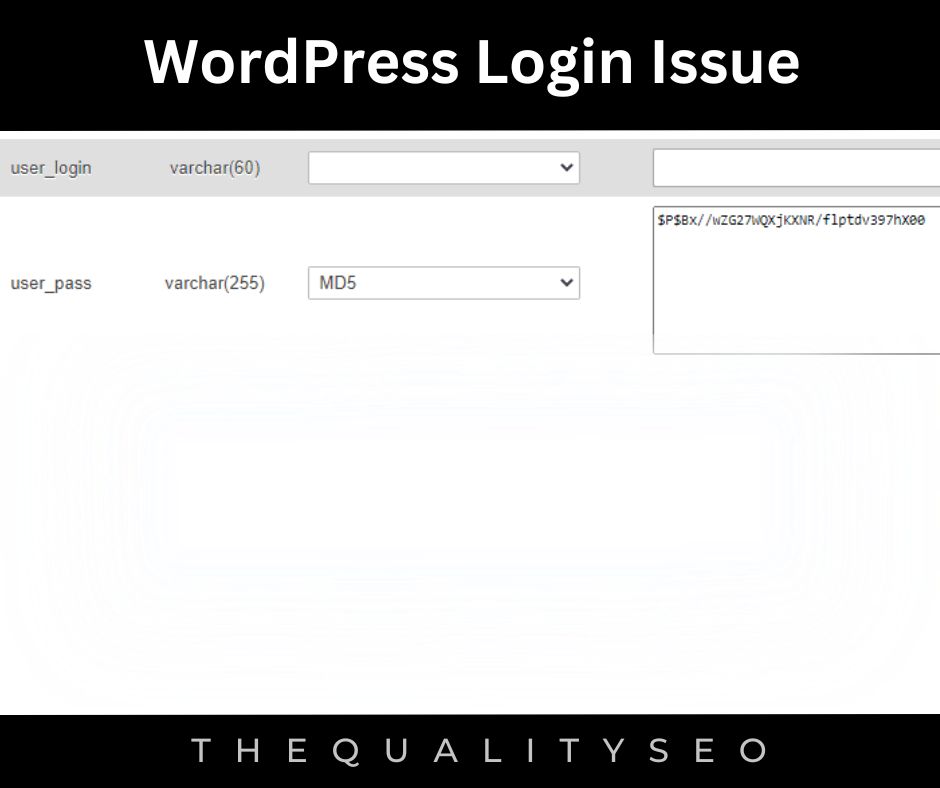
However, if you’re even logged out and incapable to retrieve your password, there are many additional alternatives you can use. You can simply go to Cpanel and Worpress to direct log in without the need for a password and Username. You can also change your password on the WordPress page.
2. Cache and Cookies
Cookies are tiny files found in browser directories that hold information about a user’s interaction with specific websites. WordPress needs the employ of cookies at the time of the login process. If cookies are not allowed, WordPress login can’t appear.
The browser cache directs to the temporary files held on your web browser when you use a web page. If your cache is not revising appropriately, you may be noticing older versions of some of the files that sustain WordPress.
How to Clear Your Browser’s Cache and Cookies?
Cache and cookie-related WordPress login problems are normally effortlessly corrected. First, inspect to ensure that cookies are enabled, and then empty your cache and cookies.
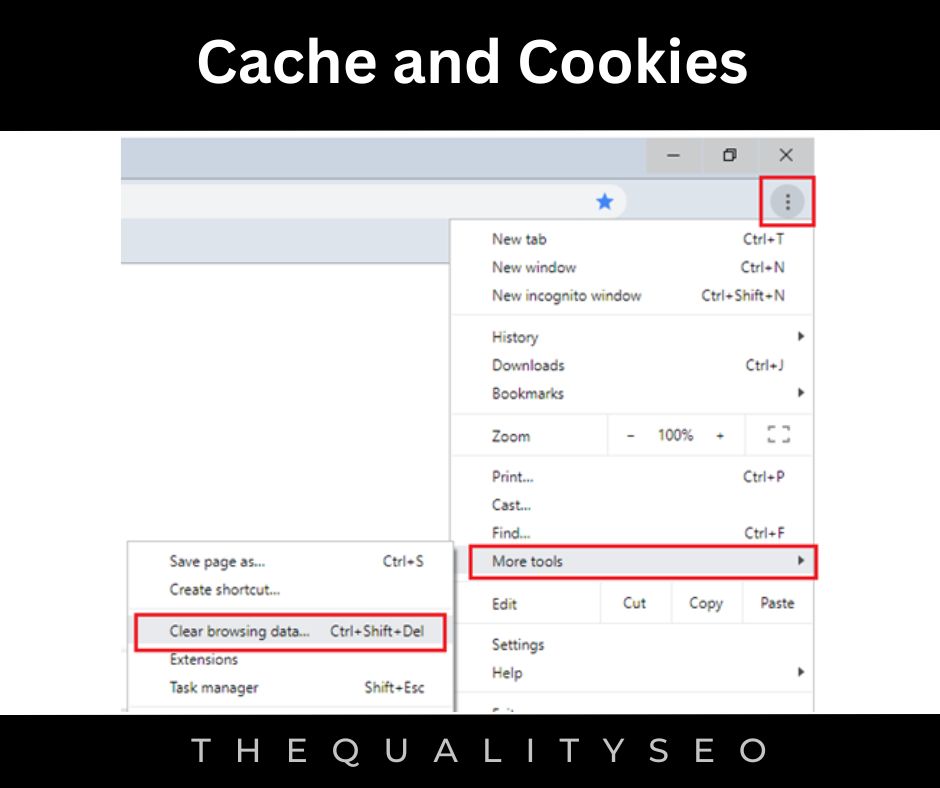
3. Plugin Interference
It’s likely for a plugin to interrupt the login method. A plugin may not have been updated correctly, or there could be a dispute between two or more of the plugins present on your website.
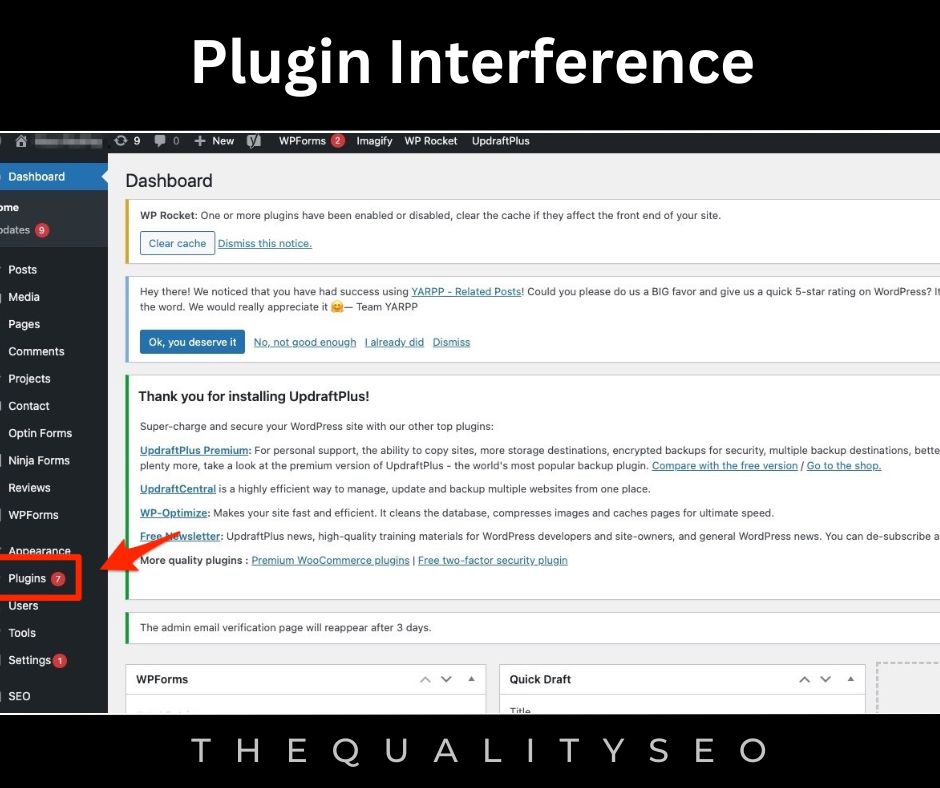
How to Solve Plugin Interference With the WordPress Login?
The foremost thing you must do is verify that the issue is being generated by a plugin. You can do this by deactivating all of your plugins, or by temporarily renaming the plugins folder.
If you own an entry to your admin Dashboard, simply visit the Plugins menu and deactivate all plugins. Ensure to back up your site foremost. Choose all of the plugins, go to Bulk Actions and select Deactivate.
If you don’t have entry to the admin Dashboard, you can change the name of the plugins folder in your WordPress root directory. Employ a File Transfer Protocol (FTP), client, find the wp-content/plugins folder, and rename it for a short time.
After you change the name of that folder, WordPress won’t be capable to identify or access it. That signifies that it will automatically disable all plugins available on your website. Although that might wreak a little havoc, it’s the quickest way to verify if a plugin is after your login problem.
Once you have deactivated all plugins available on your website, try logging in. If you’re now capable to log in, you’ve verified that a plugin is forcing the problem. If so, you’ll require to troubleshoot to find which plugin is pushing the problem.
4. Theme Interference
Theme problems can force WordPress login problems a few times, particularly if your theme contains a custom login page.
This problem is most probably to raise its head when a troubling theme update is installed, or when the WordPress core is updated, making a theme incompatibility with WordPress update.
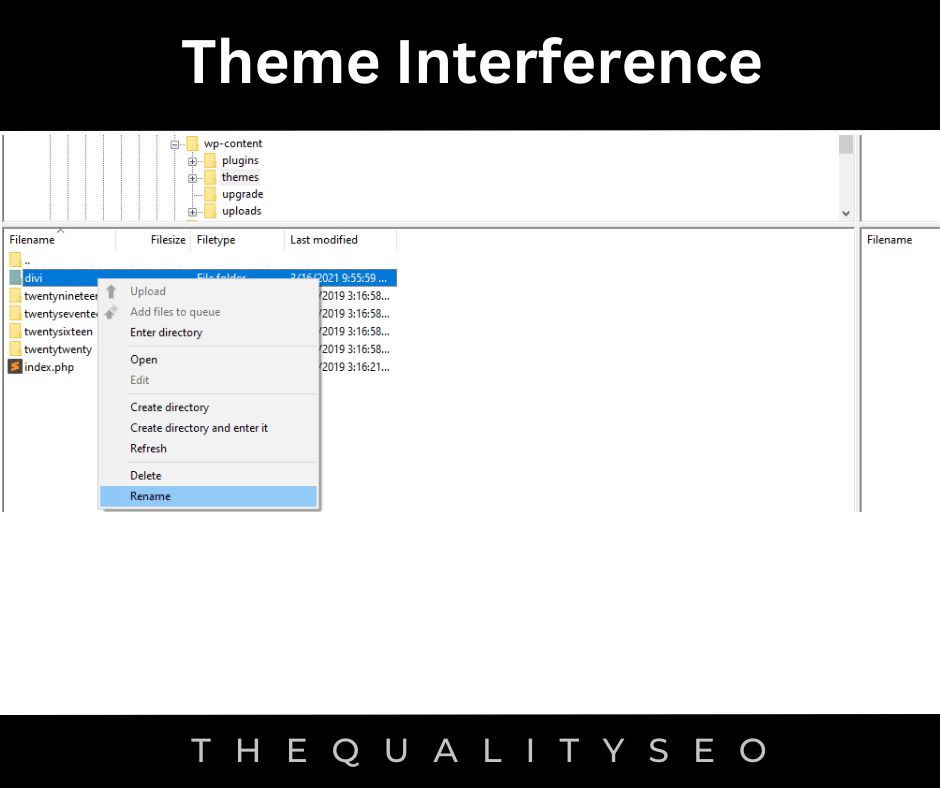
How to Solve Theme Interference With the WordPress Login?
Specifying if your theme is after your login sufferings work much the same as with plugins. You can modify the name of the folder for your active theme through FTP, and WordPress will revert to its default template.
To accomplish this, temporarily rename your active theme’s directory so that WordPress doesn’t identify it. Access the wp-content/themes folder employing an FTP client, locate the active theme’s folder, and provide it a new name.
Now try logging in to ensure that the theme is the problem. If your active theme was after your login issues, you might require to temporarily switch templates or off your custom login page (if you’re utilizing one).
5. Corrupted Login File
By default, your WordPress login page is found at wp-login.php, which is even the name of its corresponding file. If WordPress can’t locate that file, then you won’t be capable to log in to your website and you may head into a 404 error.
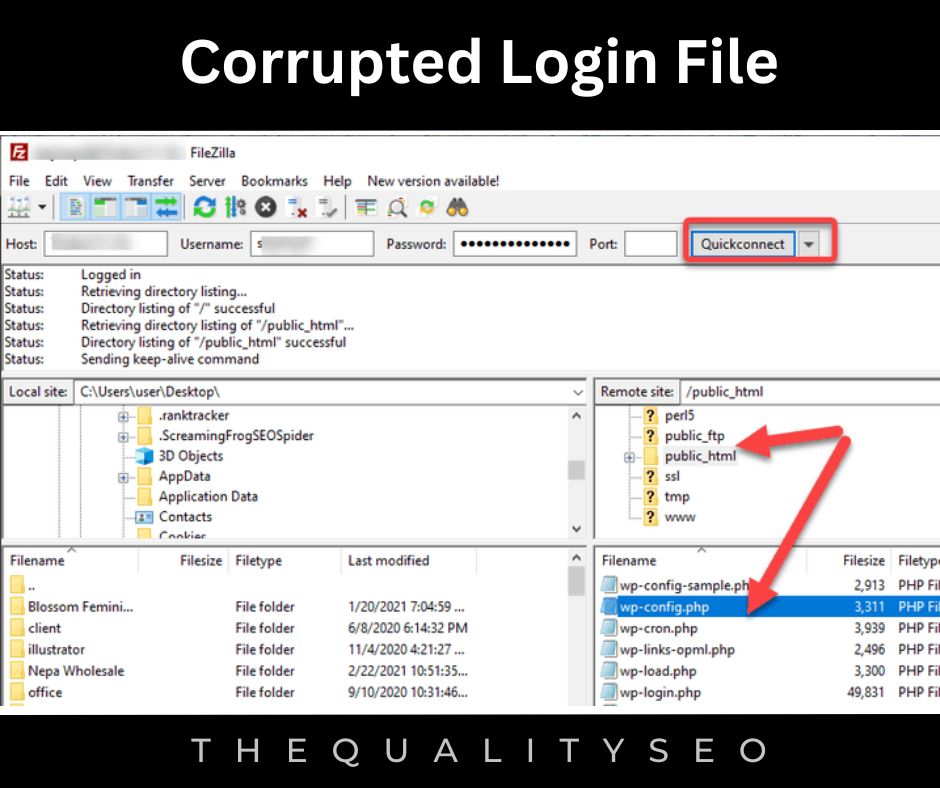
How to Restore a WordPress Login File
To decide if this is the problem (and to simultaneously fix it) you will require to substitute the wp-login.php file with a brand new one. To accomplish so follow the steps provided below:
a. Back up WordPress before deleting your login file.
b. Locate your wp-login.php file within the WordPress root directory.
c. Subsequent, download the latest version of WordPress and find the wp-login.php file in the new download.
d. Copy this file to the location of your deleted file.
e. Launch the new login file and explore “redefining user_login”
Just below a PHP comment starting with that phrase, locate and substitute code as shown in the snippet below.
0102030405 | // Replace it with this line |
If a corrupted wp-login.php file was the cause of your login issue, that should be fixed soon.
6. Redirected WordPress or Site URL
The WordPress address URL finds the place where WordPress is established, while the site address URL specifies where your website should fix. If either is incorrect, it can outcome in WordPress login problems and other blunders that protect you from entering the admin dashboard.
This can occur if you have currently migrated your website or changed the path of the WordPress core files. It can also smoothly be due to an itinerant keystroke while operating with your WordPress database.
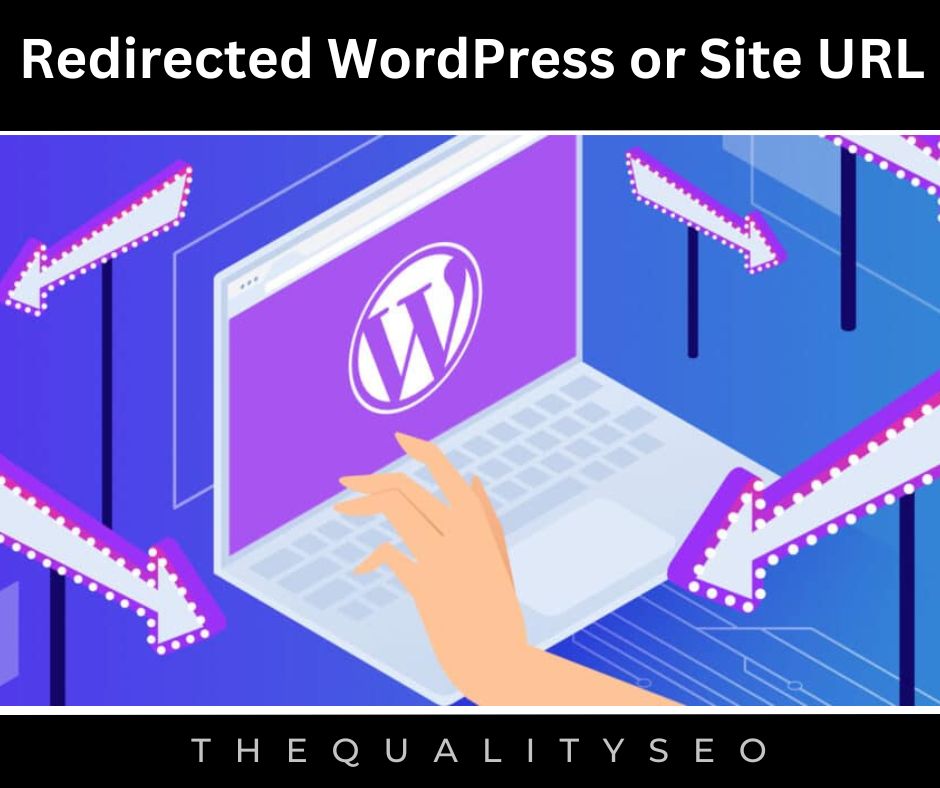
How to Solve an Error With Your WordPress Address URL?
There are tons of possible solutions when it arrives to solving the WordPress address and site address URLs. However, there is a simple (albeit temporary) trick to allow you to ensure that you do in fact have a URL problem on your hands.
After backing up your site, enter the wp-config.php file within your root directory and put the following code:
0102 | |
Ensure to employ the WordPress address URL for WP_HOME and the site address URL for WP_SITEURL. By default, both addresses will be identical. However, if you’ve provided WordPress its own directory, the WordPress address URL will contain the directory in which you’ve established WordPress.
Next, preserve the updated wp-config.php file and upload it to your server. It should overwrite the existing wp-config.php file within your WordPress root directory.
Try logging in currently and if you accomplish it, then you understand what the reason for your problems was.
Keep in the sense that this is a temporary solution to the problem, though. If you employ this strategy, it will hard-code the values into your website and control you from altering the theme through your WordPress Settings page.
Rather, the WordPress codex suggests that you follow one of these strategies for updating your site’s URL:
1. Revise your functions.php file.
2. Modify the URL through your database.
3. Employ WordPress “relocate” function.
You can discover instructions for how to complete all three methods within the Codex. Before you convey to work, though, replace your wp-config.php file to its previous state by deleting the two lines that you kept to it.
7. Corrupted .htaccess File
.htaccess files contain server configuration instructions and configurations for numerous or single directories.
WordPress arrives with a .htaccess file that you can change to execute redirects, whitelist IP addresses, and more.
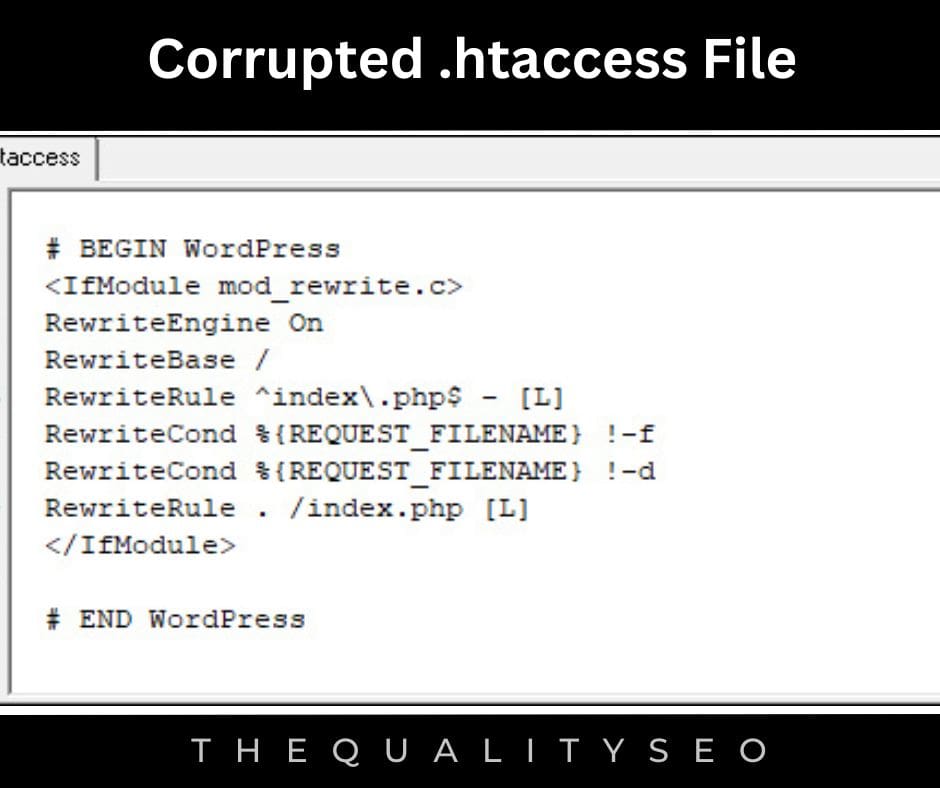
However, one difficulty with changing your .htaccess file is that it can evolve corrupted and guide to WordPress login problems.
How to Fix a Corrupted .htaccess File?
The most straightforward method to solve a corrupted .htaccess file is to substitute the version on your server with a clean copy. Here’s the default code that a WordPress .htaccess file mostly contains:
0102030405060708091011 | # BEGIN WordPressRewriteEngine OnRewriteRule .* - [E=HTTP_AUTHORIZATION:%{HTTP:Authorization}]RewriteBase /RewriteRule ^index\.php$ - [L]RewriteCond %{REQUEST_FILENAME} !-fRewriteCond %{REQUEST_FILENAME} !-dRewriteRule . /index.php [L] |
What you require to do is enter your WordPress root directory and locate the .htaccess file within. Download it to your computer just in case, and then revise the file on your server. Substitute its code with the snippet that you notice above and click on save the modifications to it.
It’s essential to know that accomplishing this might affect part of your site’s functionality if you’ve completed any changes to the .htaccess file. Some web hosts also execute changes for you out of the box for better performance.
Once you maintain a “clean” .htaccess file, try logging into your website again and the issue should be fixed.
This was for the Resolving the WordPress Login Issues.
Read Also: How To Build Backlinks To Your Blog

